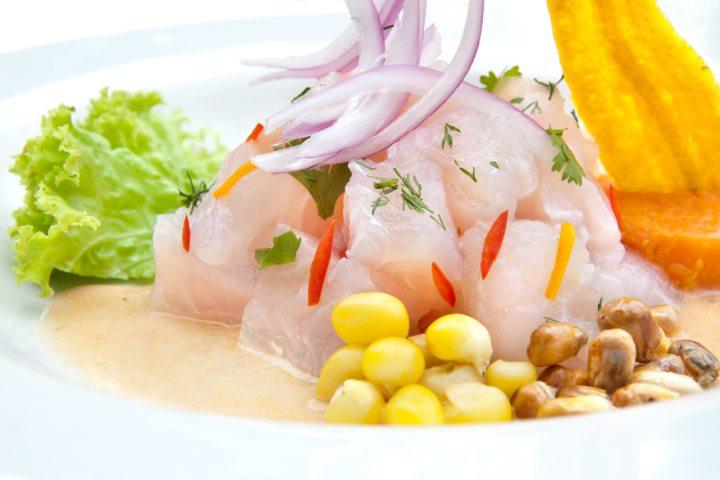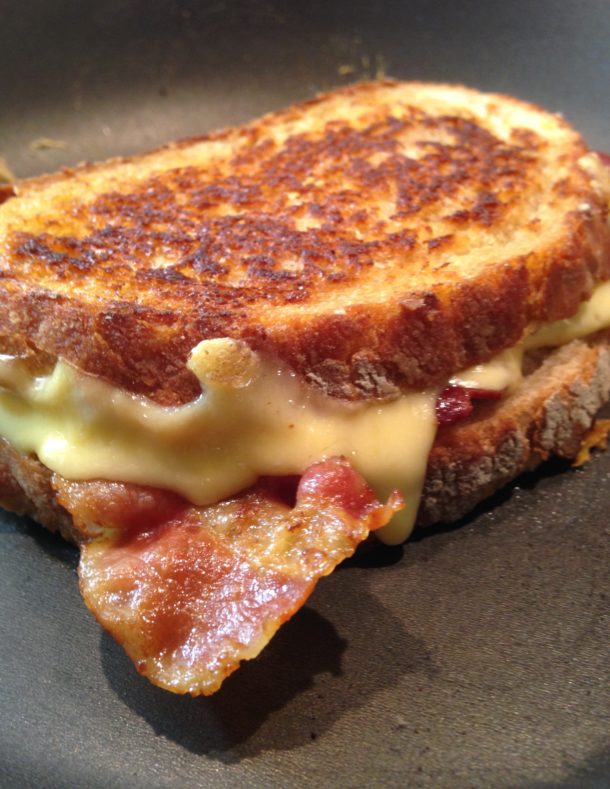We are sitting at a small restaurant in Miami Beach. A block away, the waves wash against the sand. All around us, the night is full of light and color and noise – Miami Beach is not a city that believes much in going to bed. But the noise and the lights and the surf are the background, because in front of us is a collection of dishes that can only be described as “Mmmmmm…”. In the middle, there is a trio of ceviche – raw or mostly-raw seafood in sauces that prominently feature the Peruvian Aji pepper. There is a veal heart, marinated in more Aji, grilled, and sliced. There is a plate of what look like steak fries, but are actually battered and fried Yucca with more Aji sauce for dipping. And there is corn – kernels larger than red beans; fried, boiled, grilled. Peruvian food is sweeping the states and the rest of the world on a wave of yellow pepper and corn.
It may seem odd that a small South American country most people couldn’t find on a map and a small yellow pepper most people can’t pronounce (Ah-hee ah-ma-REE-yo) would be the basis of a huge food trend, but that’s the way these things work. A small community of expats forms in the big cities of the world – the Londons, Parises, New Yorks, Tokyos – and they long for their home. They set up little interesting shops that carry strange produce, and open little cafes that serve strange food. Eventually, the early adopters of the foodie world come by for a visit, and bring back strange tales of octopus and corn and yucca, and the rest just grows on its own. It mixes with local cuisine, and eventually fades into the background of normalcy.
Or at least that’s the way these things normally go. Peru is a little bit different. For one, it’s as much of a melting pot as any nation anywhere in the world. Walk down the streets of Lima and you are just as likely to hear Japanese or Italian or German or English as you are Spanish. Waves of immigration have taken traditional Andean cuisine and added their own touch to it. So you have roasted Guinea Pig (Yes, guinea pig, called Cuy here – a dish so important to the Andean population that there are shrines and monuments to it) served next to a fusion take on traditional chinese stir fry served with french fries and an appetizer of what you could swear is sushi but with a different name. Fusion doesn’t begin to describe it, since fusion typically implies some sort of conscious decision to mix cuisines. Instead, each wave of immigration just tried to make their own familiar dishes using local ingredients, and the results became a sort of uniform fusion-ness all on their own.
Now with one of the world’s largest food fairs happening in Lima, Peru is in the global spotlight. So what is this magical cuisine that we’re all about to be inundated with, anyway? We braved all manner of delicious edibles to bring you a round-up.
Ceviche – At this point, most people are familiar with ceviche, at least to some degree. It has been a staple in Baja-inspired cuisine for a while. Peruvian ceviche is a little different than the runny shrimp cocktail you might have gotten at your local Mexican restaurant, though. For starters, there’s very little shrimp. Most of the seafood tends towards fish, squid, and octopus. The seafood is cut up, raw, into what peruvians call “leche de tigre” – tiger’s milk. It’s a mixture of citrus, usually lemon, sometimes with some added vinegar, and often flavored by the Aji Amarillo (the yellow chille). The acidity of the broth cooks the fish ever so slightly, giving everything a wonderful texture. It’s fresh, and it’s delicious, and the Aji Amarillo is just hot enough to notice, without being too hot to handle.
Potatoes – Potatoes are a topic of much contention in the andes. The region, after all, gave birth to the potato that we all know and love. Before the Conquistadors came, there were no potatoes (except for the sweet variety) in Europe. Peru claims they originated the potato. Chile claims the same. We may never know. What we DO know is that the Peruvians have discovered pretty much every single possible way of cooking the potato long before someone in France decided to cut them up thin and drop them in hot oil. You’ll find them fried, mashed, stewed, battered, boiled, and generally put upon in every conceivable fashion, each more delicious than the next. A popular dish is Causa, which is essentially mashed potatoes and guacamole, layered together and served in cold slices.
Cuy – The one thing everyone knows about Peru is that they eat Guinea Pig. It might seem strange and inhumane, coming from a world where guinea pigs are kept as pets. But on the other hand, there are plenty of people who walk around with pet goats and pigs, but we rarely hear anyone complaining about getting some bacon or Jamaican curried goat. Historically, Cuy is perhaps the most important source of meat for native Peruvians who live high in the mountains. While beef and lamb have taken over in the lowlands, as they have in much of South America, Cuy is still considered a great delicacy and is still served often as you get higher up the mountains.
Anticuchos – As long as man has been eating meat, there has always been someone who decided that the whole process would be simpler if we just roasted it on sticks and then used those same sticks to eat it. The kebob is a near-universal truth in the world, and the Anticusho is the kebob of Peru. You’ll find variations on this dish everywhere from streetcart vendors to the most expensive restaurants. Often, they will use pieces of meat that are uncommon in the rest of the kebob world – heart and liver are favorites.
Pollo A La Brasa – Roast chicken. Marinated in soy sauce and peppers. Do I need to go on?
Aji Amarillo – The heart and soul of peruvian cuisine. This small, bright yellow pepper is used to flavor pretty much everything, and gives a lot of the regional specialties a bright and cheerful color. It’s about as hot as a Jalapeno, though with significantly brighter flavors. It’s somewhat sweet, with a strong hint of citrus.
Corn – The corn favored by Peruvian chefs isn’t the small, sweet affair we find in the west. Instead, it has large kernels (as big as a dime) and a more savory taste. It is served with everything, and is often roasted and presented as a pre-appetizer, the way peanuts might be at a steakhouse.
You might not find a lot of these ingredients and flavors in your local market yet, but they’re coming. You would do well to keep an eye out for them and jump at any opportunity to try some home-made Peruvian cuisine, or to check out a Peruvian restaurant in your town.






Trackbacks/Pingbacks